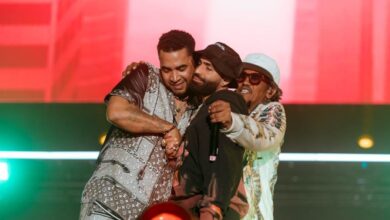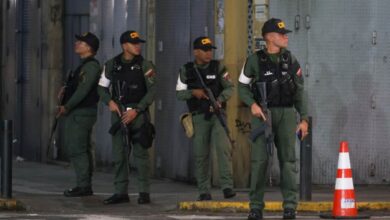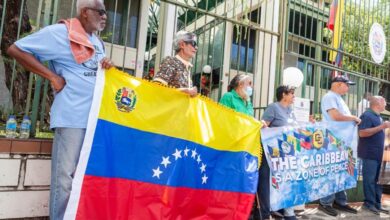Iceland: the best country for women
Listen this article
Lower salary gap and equal maternity leave are just some of the characteristics that make this Nordic country appealing for women

Iceland, the Nordic country characterized by its volcanic landscapes, glaciers and incredible panoramas of northern lights, not only highlights in the above, but according to different index, Iceland stands out as one of the best countries for women.
Leer en español: Islandia: el mejor país para ser mujer
From reducing the wage gap, including involving women in the economic sector, to extensive licenses with guarantees and rights that allow them to continue with their jobs, in LatinAmerican Post we tell you more.
The indicators approve
Around the world there are indexes that measure different conditions, such as inequity, human rights, tourism, among many others. The Economist, for example, presents each year the results of the "glass ceiling" index (which refers to the obstacles that women have to achieve job promotion and access to managerial positions, according to the Women's Secretariat of Bogotá website), qualifies the best countries for working women.
According to The HuffPost, in 2016, Iceland ranked first, while in 2018 and 2019 it ranked third. On the other hand, the Global Report on Gender Gaps 2018 of the World Economic Forum, in which four dimensions are evaluated (participation and economic opportunity, educational achievement, health and survival, and political empowerment), Iceland led the ranking.
As El Comercio explains, "that nation was the first where, by law, companies were forced to pay men and women equally since 2017". Finally, according to the index of "Women's Liveability Index", developed by Nestpick and based on four categories (infrastructure, inequality, legislation and work), it puts Iceland in fifth place.
Iceland has long been deemed the best place in the world to be a woman. For the past nine years, the country has topped the World Economic Forum’s gender equality index; the UK comes in at 15th.
— Fuad Alakbarov (@DrAlakbarov) 27 de enero de 2019
Women in power
In 1980, Iceland broke stereotypes, as it was in that year that the first woman elected to be president of a country was elected: Vigdis Finnbogadottir . As BBC explains, Finnbogadottir "was the first female president in Europe and the first democratically elected head of state in the world". Finnbogadottir would last 16 years in power.
In 2009, another woman held an important position: Jóhanna Sigurðardóttir was appointed as prime minister. In addition, Sigurðardóttir, who lasted until 2013, was the first female head of government in the world to openly belong to the LGBT community, as El País points out, "her condition as a lesbian was known to everyone, she was married to another woman and I had two children. "
In addition, in 2017 another woman took office. This is Katrin Jakobsdóttir, who has been a member of the Icelandic parliament since 2007 and who has also been president of the Left-Green Movement since 2013. During her election campaign, she focused on points such as gender inequality, education, LGBT rights, among others. A sa result, and according to S Moda, "were the main support women and younger voters, between 18 and 29 years."
The Nordic ministers for equality reiterated their support for @UN_Women at a meeting with @phumzileunwomen at #CSW63. We are committed to the full realisation of the #SDGs and determined to share our #NordicSolutions to gender equality. pic.twitter.com/AhCS0fwqMl
— Katrín Jakobsdóttir (@katrinjak) 11 de marzo de 2019
You may be interested in reading: 3 key factors for maternity leave
Feminists since 1975
It is clear that none of these situations could have been achieved without women having fought for it. On October 24, 1975, currently considered the "Women's Day", around 90% of them were marching for gender equality. As BBC recalls, "instead of going to the office, dedicating themselves to housework or caring for their children, they took to the streets of Iceland (…) a day that changed the perception of women in the country and helped place it at the forefront of the feminist struggle. "
On the other hand and according to Vix, they have a Women's Alliance "to boost them in politics", resulting in it being one of the countries with the highest female political participation, with 38% . In addition, thanks to the Equal Pay Act, companies have to show that they are not paying more for the gender. In the same way, they also have a law that "requires having a gender quota in jobs of 40%."
Women in Iceland come together to fight for equality, shouting OUT #kvennafrí #womensrights pic.twitter.com/vTPFwfSoVk
— Salka Sól Eyfeld (@salkadelasol) 24 de octubre de 2016
Inclusive motherhood
Unlike many countries where parents have few weeks of leave, Iceland requires both the father and the mother to take three months off. Thus, between the two parents, the maternity leave totals nine months, in which the remaining three months have to be divided between the two of them. In this way, neither the father nor the mother can use the entire license for themselves.
In addition to spending time with the children and not falling all the responsibilities in the mother, the license does not create preferences when hiring women, because the upbringing is shared equally.
LatinAmerican Post | Laura Viviana Guevara Muñoz
Translated from "Islandia: el mejor país para ser mujer"





